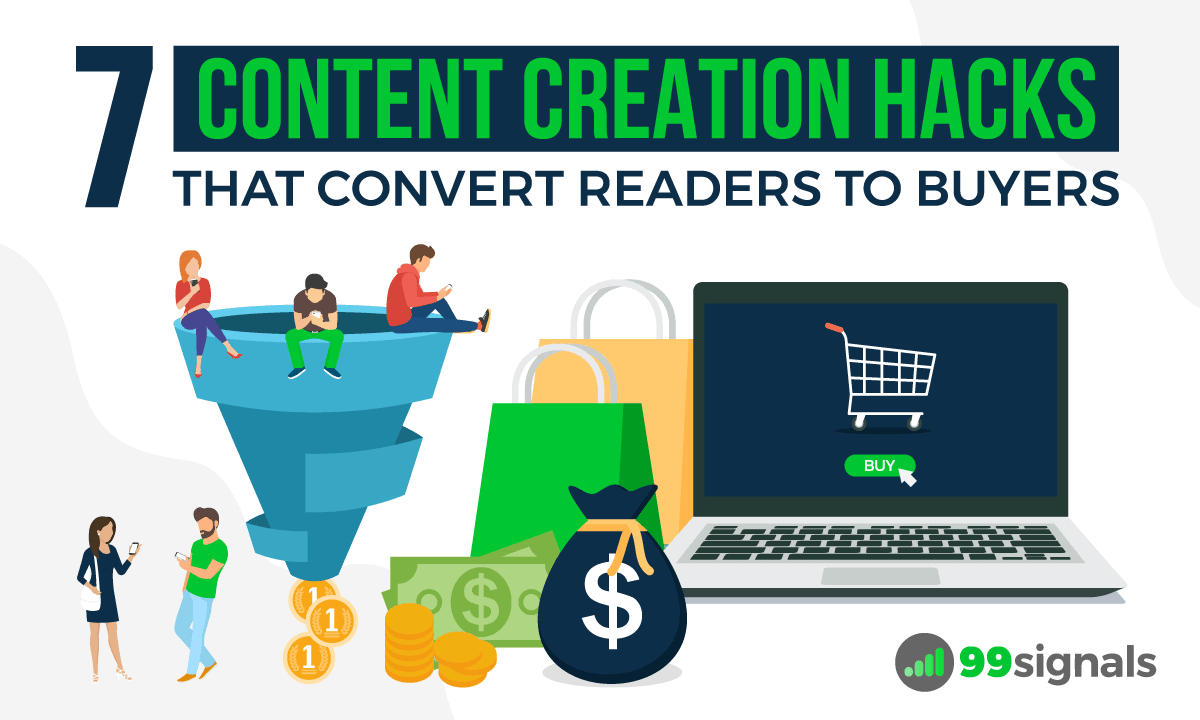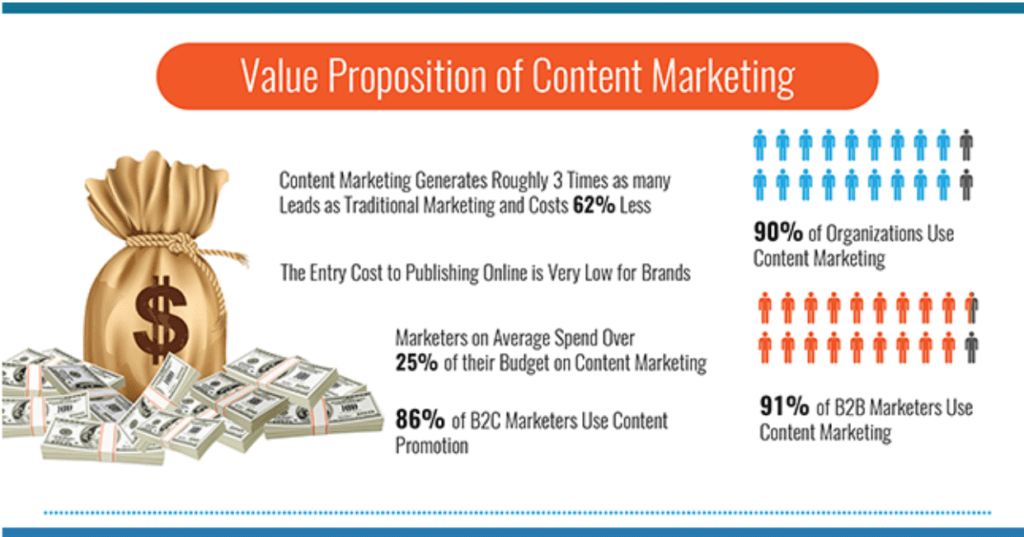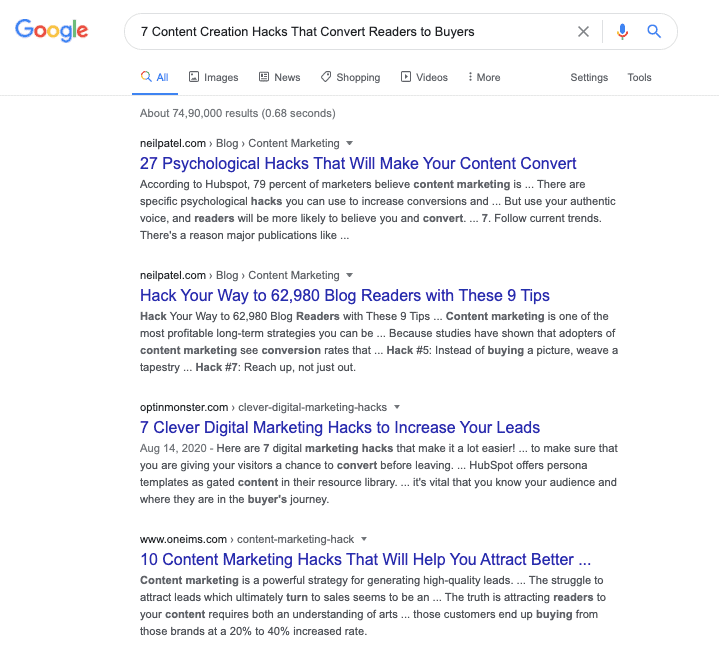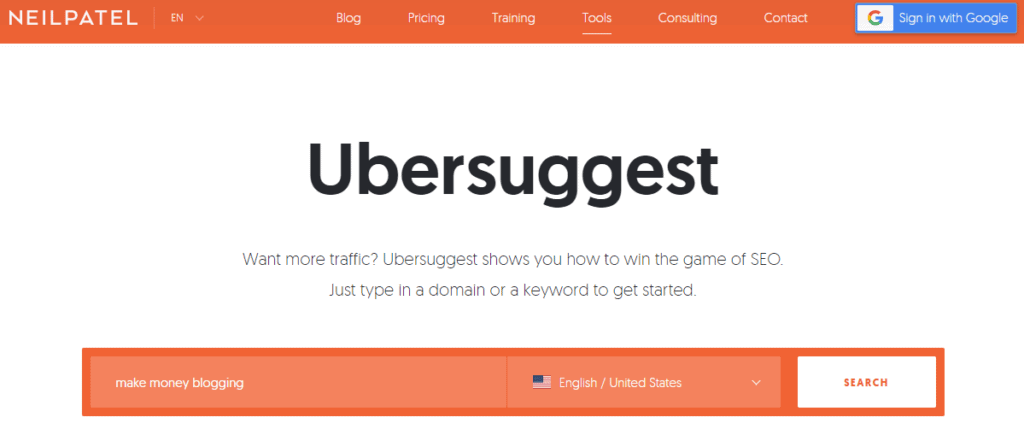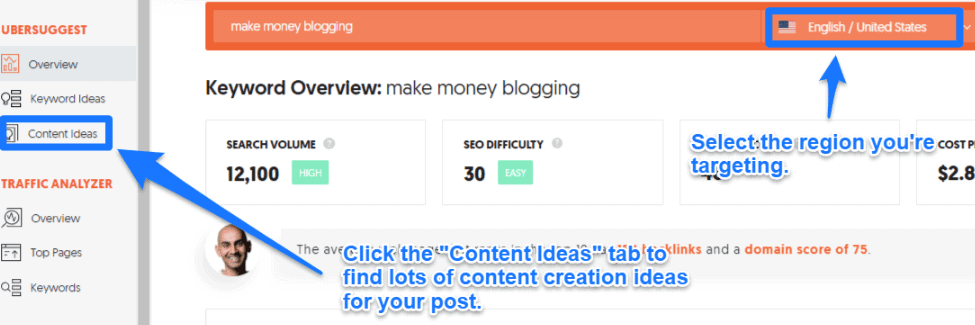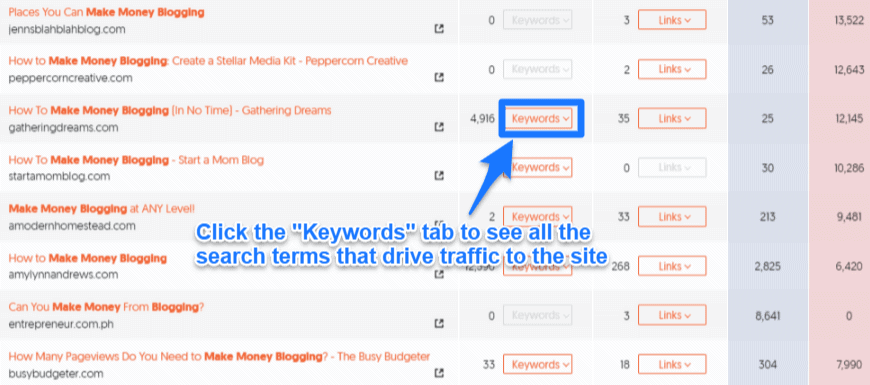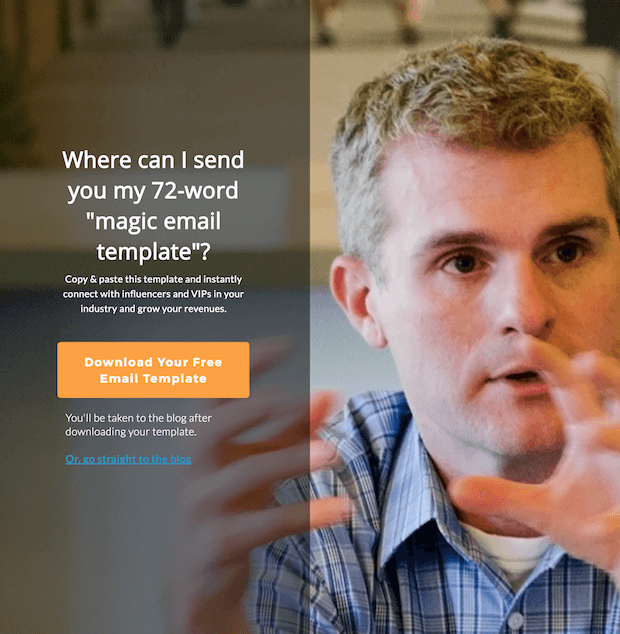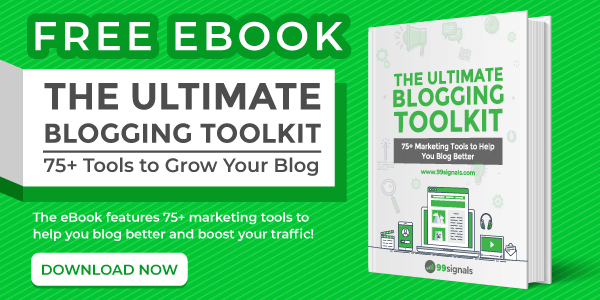However, one of the best ways to convert your readers is to ensure that your blog content is persuasive. So ask yourself; is my blog content convincing enough to convert visitors and readers to leads and paying customers? As a digital marketer, your job as a content creator is to use marketing content to educate, convince, and sell your offerings. And while some content you create will convert, several others will not impact your target audience. Your goal as a content marketer is to generate more conversion-oriented blog posts and other content types. That way, you increase leads and sales. So, since you don’t want to settle for less, this article will show you practical content creation tips to increase conversion rates. But let us first look at why content creation is vital to your online business.
Why is Content Creation So Important?
An essential aspect of content marketing is content. And while there are several ways to boost conversions, the most vital of all is marketing content. Indeed, the study shows that content marketing converts 3x more leads than traditional marketing and is 60% cost-effective. That is why it is essential to learn how to create high-converting content materials that convert users into paying customers. Thus, let us consider a few marketing content statistics to inspire your content creation habit.
Benefits of Creating Original Content for Your Business Blog
The message you send out to consumers can make or break your online business. Put differently, the blog content you publish is an essential element and a huge factor in improving your website conversions. Therefore, taking the time to create quality content that harmonizes with your brand goals and speaks to your audience influences buyer decisions. Why is that so? Because it establishes you as an expert and builds your credibility. In view of this, significant content creation should be able to persuade the reader. Some benefits include:
You become a content writing and marketing expert. Drive more organic traffic Grow brand recognition Increase shares and social media signals Attract more prospects and be top of mind on clients’ list Influence your reader to buy your products or pay for your services
Content Marketing Statistics You Should Know
The following content marketing statistics are points of reference that will guide and inspire your content creation moving forward.
More on Content Marketing Statistics
According to Smart Insights, bloggers spent three to four hours writing a typical blog post. Almost 20% of bloggers who respond to a survey said they spend, on average, six hours writing informative blog posts. And I strongly agree with that. Why? Because the competition is fierce. Every marketer wants to stand out and beat the competition.
For example, when writing the content, nearly 5-million blog posts were already on the internet for consumption. That is according to WorldOMeter statistics. Every marketer wants to ensure that their blog content stands out from the competition and appears on Google searches. But you agree that several marketers do not have the time to spare. For this, 84% of B2B marketers outsource content creation to freelance writers. That is according to research by the Content Marketing Institute.
Furthermore, a study by Sitecore and SoDA reveals that more than 95% of global marketing leaders prioritize publishing personalized content faster to improve business growth. Therefore, considering the statistics above, you realize that these content marketers are not settling for any piece of content. Those marketers who’re actively investing 25% of marketing budget into content creation do so to get quality materials that align with their brand voice and speak to the reader. As a result, they drive more web traffic, generate more leads, and convert readers. Given this, ensure that the content you create is informative and adds value to your readership. Any types of content you develop, including:
Articles Blog posts Podcasts Visual content materials (videos, infographics, images)
Ensure you invest time in creating materials that help your readers. The more help you provide, the more likely you’ll convert readers to leads and buyers.
The Best Content Creation Tips for Writing Marketing Content That Generate Results
As a valuable element of content marketing, how can you create content pieces that convert? Let us define the seven most effective content creation strategies that will take your online business to the next height via increased conversions.
1. Create Content Around Topics That Convert
The first step for me is to ensure that you write about proven blog topics that convert readers. Why? Because your primary content creation and marketing objective is to produce share-worthy content that converts. Therefore, it makes sense to write around subjects that will transform your readers into loyal customers. Now, it is reasonable to say that quality content is in high demand. That is why more marketers are outsourcing blogging and content writing tasks. So how can you find top content ideas that will generate leads? Your blog is the first place to start looking. How? Go to your blog and look for the most popular posts–those that get the most social media shares and readers’ interactions. Make a list of them. You can also use Google Analytics to find more valuable topics that will engage your readers. When you have an extensive list of topics, start developing them into useful materials for your target market. However, note that your content will NOT work without a proper structure and formatting. Thus, here are a few pro blogging tips to follow for optimal results:
Create a click-worthy headline (titles that compel a visitor to click to read) Craft a captivating introduction that keeps the reader on your page Ensure that the content body to complement the title Include quality visuals (I” m not talking stock photos. Instead, try adding screenshot, graphic, and or infographic) Personalize your blog post to a particular audience Apply spatial order organization in your writing (it helps you deliver your content in a logical style) Develop a forceful concluding section Use call-to-action to tell your readers what steps you want them to take.
2. Persuade Your Readers With Scannable Content
Your content structure plays a vital role in how efficient your message will impact your reader. It can also make your readers stick around your blog and explore other materials, or bounce. You surely don’t want visitors to leave as soon as they arrive. Do you? That is why you have to improve user experience with scannable blog posts. But if you’re new to blogging and content writing, you may be wondering, “what is scannable content?” Let us examine that a little.
What is Scannable Content?
Scannable content is short written pieces that are concise to the point. It is more valuable to the reader because it has brief paragraphs and sentences that allow readers to scan through your article quickly. Writers use bold, italics, subtitle, and bullets to highlight and emphasize critical points.
Why is Creating Scannable Content Essential?
It is crucial because consumers searching for information on your blog will typically move or scan through pages quickly. You can compare scanning content on a blog or website to how a terminator scans its surrounding area. They check so swiftly and move on similarly to how website users’ skim your content when searching for information. Therefore, creating scannable blog posts will help draw users’ attention to areas of interest and sway them with your message. But many bloggers and content marketers overlook this vital content writing component. Consequently, applying this underused writing factor will enable you to convert more readers to leads and grow your business blog faster.
Characteristics of Scannable Content
What makes content scannable? Although I mentioned a few traits above, I will outline them in more detail below. Here are some elements to keep in mind for persuasive scannable writing:
Captivating headline: Every content starts with a title, but a scannable piece begins with a catchy headline, including a focus keyword. It arouses curiosity, benefits, and other important factors that connect with your readers that will get them to click to read. Subtitles: You use subheadings as essential writing tools for breaking up your posts. They make your writing more scannable and easy to read. Short sentences and paragraphs: One of blogging and marketing content best practices is to create short sentences and paragraphs. Also, make use of more power words (active voice). Numbered and bullet lists: These blog writing elements are also critical since they make your content more scannable. Apply them in your content to improve your writing. Bold and italic fonts: Using bold fonts is another writing tool that is crucial to establishing yourself as a blogging and content marketing expert. A simple change in font can transform your content into a masterpiece. You can also use bold fonts to highlight useful pointers you want your audience to take home. Images: Use images to appeal to your readers and grab their attention. Many learn faster with visuals. So use appropriate photos to convey thoughts and intentions. It will make your content scannable and appealing. Visual learners will understand your message quickly.
3. Research Your Content Topic
Researching your topic well enough before you start writing your article or blog post is essential in many ways. For one thing, it gives you a profound idea of what your audience wants from you. In other words, you want to provide value to your readers, and the best way is to conduct in-depth research to gather valuable information that will connect with them. So. Instead of writing what you assume your target audience will like, research helps you develop your content according to your readers’ wants and needs. It also enables you to adapt and customize your message in conformity with the user’s needs. For instance, when I started, I wrote on any topic that interests me, and NOT give thoughts about what my readers want. The result hurt my blogging business. Moreover, conducting thorough research before writing allows you to create SEO-driven content that will outrank your competition. More on that in a moment. Therefore, when you focus on researching your topics to see what excites your readers, you will consistently create content that engages your target market, drives traffic, converts leads, and improves sales.
4. Conduct Research on Your Top Competitors
Many of your competitors have been on the business long before you. So they already have a loyal audience and have built a community around their blogs. Given that they’re competitors, you need to know what they’re doing to attract more eyeballs and convert more leads from their blogs. That is where researching your competition comes to play. By understanding what your competitors are doing to scale their businesses, you will be better positioned to do better. Here’s what to do; Plug your title into Google to see what comes up. I just entered the headline of this article, and here’s the result. See the screenshot below:
The first four search results show that my topic idea is unique, which is ideal for SEO. It indicates the originality of your content creation which will help attract quality backlinks. So enter your chosen title or keyword and analyze the results that appear. If your idea is unique, you’ll see that others have not created content on the subject. But if your competition has already covered the subject, you can still do well on the topic. How? Look for new angles, add more vital information that your competitors missed. Include statistical data to boost your post’s authenticity, graphs, and other illustrative images to strengthen your content. Also, when researching my competitors, I check out the most popular posts or trending topics. You can find it on the sidebar or below the page. For example, here at 99signals, the screenshot reveals trending blog posts on the site.
You can also use BuzzSumo, SpyFu, Google Trends, and other keyword tools to research your competitors. These content tools will show you what content is performing best for your competitors. When you get this information, create a better version of your selected topics. Craft content copy that is better than your competition.
How to Use Keyword Research Tools to Spy on Your Competition
Using keyword tools is quite simple. I use either Semrush, Ahrefs, and Ubersuggest. But I’m going to use Ubersuggest for this illustration since it is a beginner-friendly software. Thus, open the software and enter your focus keywords. Hence, I searched “make money blogging.”
You can see the result below. It shows your monthly search volume based on the region you’re targeting, SEO difficulty, and other parameters.
Then click the “Content Ideas” tab on the left sidebar or scroll down to the “Content Ideas” section to find tons of blog content ideas for your creation.
Once there, look for those performing well, those with a decent amount of monthly visits and backlinks. You’ll also see how users interact with the content on social media sites like Facebook and Pinterest. Next, click the “Keywords” tab next to it to open a sea of SEO search terms. These are keywords that drive consistent organic traffic to the site. Hence, make a list of them or export and use those search terms in your content creation for more traffic and conversions. However, keep in mind that Ubersuggest will only show you the regional monthly search volume, not the global search. Ultimately, your competitor research will help you create user-targeted content pieces that convert.
5. Aim Your Content Creation Hack on Search Intent
Keyword research has gone beyond finding popular keywords and low competition keywords to target. It involves defining user search intent. That’s how to do proper keyword research nowadays. Experts call search intent in various ways, including audience intent, user intent, and keyword search intent. It is the objective behind the reason for a search. Put differently, the ultimate target of the searcher―why he is doing the research. Therefore, because consumers perform searches for various reasons, knowing the search’s intent is crucial for your content creation success. There are three commonly used types of search intentions, such as: But whatever the intent for the audience search, what matters is identifying the purpose of the research. Interestingly, search intent is a vital SEO ranking factor. Why? Because Google’s primary goal is to satisfy user search intent and provide a viable user experience (UX), another crucial Google ranking factor. For this, when you’re writing content, put yourself in your reader’s shoes and think about his intent when he searches Google. Understanding this content creation process gives you an edge over your competition. You will be able to produce content around audience intent or topics your readers will be searching online. That way, you’re giving your buyer persona what they need for easy conversions into qualified leads and paying customers.
6. Create Content Upgrades to Increase Website Conversions
Creating content upgrades is essential since it increases your lead generation significantly. This content marketing tool is an opt-in or lead magnet you create for particular blogs or pages. Moreover, your ultimate goal of creating marketing content is to generate leads. Consequently, you should craft compelling content upgrades to acquire quality leads. These people are consumers you can conveniently convert to buyers. That way, website users and blog readers can quickly sign-up to your email list. Also, depending on how persuasive your lead magnet is, it enables you to point out eventual customers. You can create content upgrades in the following formats:
Ebooks Checklists PDFs Cheatsheets Email templates Swipe files Blogging resource list Blog templates Headline hacks Power words Content calendar
Here is a sample content upgrade by John Corcoran. John created a simple lead magnet for his 72-word “magic email template.” It is an irresistible offer because we love templates. They let you do more in less time. All you have to do is copy and paste, or do some minor editing.
The list goes on. But what’s also important is how to sell your lead magnet to your audience. Creating a lead magnet is one part of the puzzle. You need consumers to enter their emails and download your offers. But how can you get them to opt-in? The best way to get more opt-ins is to start writing a concise caption or introduction for your content upgrade. Tell people how to download your offer and what they’ll get when they sign-up. Also, add a call-to-action that compels users to enter their emails and download your product. This content creation approach works incredibly well. Brian Dean increased conversions by 785% using content upgrades.
7. Develop Content Around Evergreen Topics
Much as you are writing about content topics that qualify for conversions, you should also create blogs around evergreen subjects. There is a reason some content ideas are evergreen. That is because people are always searching for these topics. They remain fresh and valuable for the longest and drive consistent traffic. So, more engagement and targeted organic traffic equate increased conversions. For instance, if you create content about blogging and freelance writing, the following topics will make more sense to your audience persona:
Effective Ways to Find Freelance Writing Jobs How to Start a Freelance Writing Business from Home and Make $1,000 Your First Month Profitable Blogging Niches That Generate More Income How to Create a Profitable Blog and Start Making Money from Home Top Freelance Writing Websites to Remote Writing Jobs
These are evergreen subjects that will continue to drive search traffic to your site for years to come. Why? Because more people are transitioning to blogging and freelance writing, particularly since the Covid-19 pandemic. As more people replace their careers and become entrepreneur bloggers and freelancers, they will keep searching for content relating to the titles highlighted in the bullets above. So make it a priority to create evergreen content to help you convert more readers and visitors. They’re not time-sensitive, and that makes them evergreen. Thus, writing on such topics is essential to attract more readers, generate leads, and convert them to buyers. A survey indicates that over 50% of the US and UK employment society will transition to freelancing within five years. Furthermore, 57 million Americans are already part of the global gig economy.
Wrap Up
I believe you have learned the vital content creation hacks that will enable you to convert your blog readers to quality leads and paying customers. Website conversion is not rocket science, but you can quickly transform your blog into a conversion machine by following the steps above. Besides, after publishing your posts, ensure to give them a boost by promoting and distributing them across marketing channels, including social media. Use the best social media tools to streamline your tasks for optimal results. The interaction and social signals you get from social networking sites add up to improve your SEO search visibility. Also, leverage user-generated content and create a content calendar to improve your productivity. Are we missing something? What else would you like to add for our readers? Please, use the comments section below! If you liked this article, please share it on Twitter using the link below:
SEO Case Study: How I Boosted Organic Traffic to an Old Article by 146% in 30 Days Guest Posting: How to Scale to 50+ Guest Posts a Month 12 Clever Ways to Repurpose Content (and Get More Traffic)
